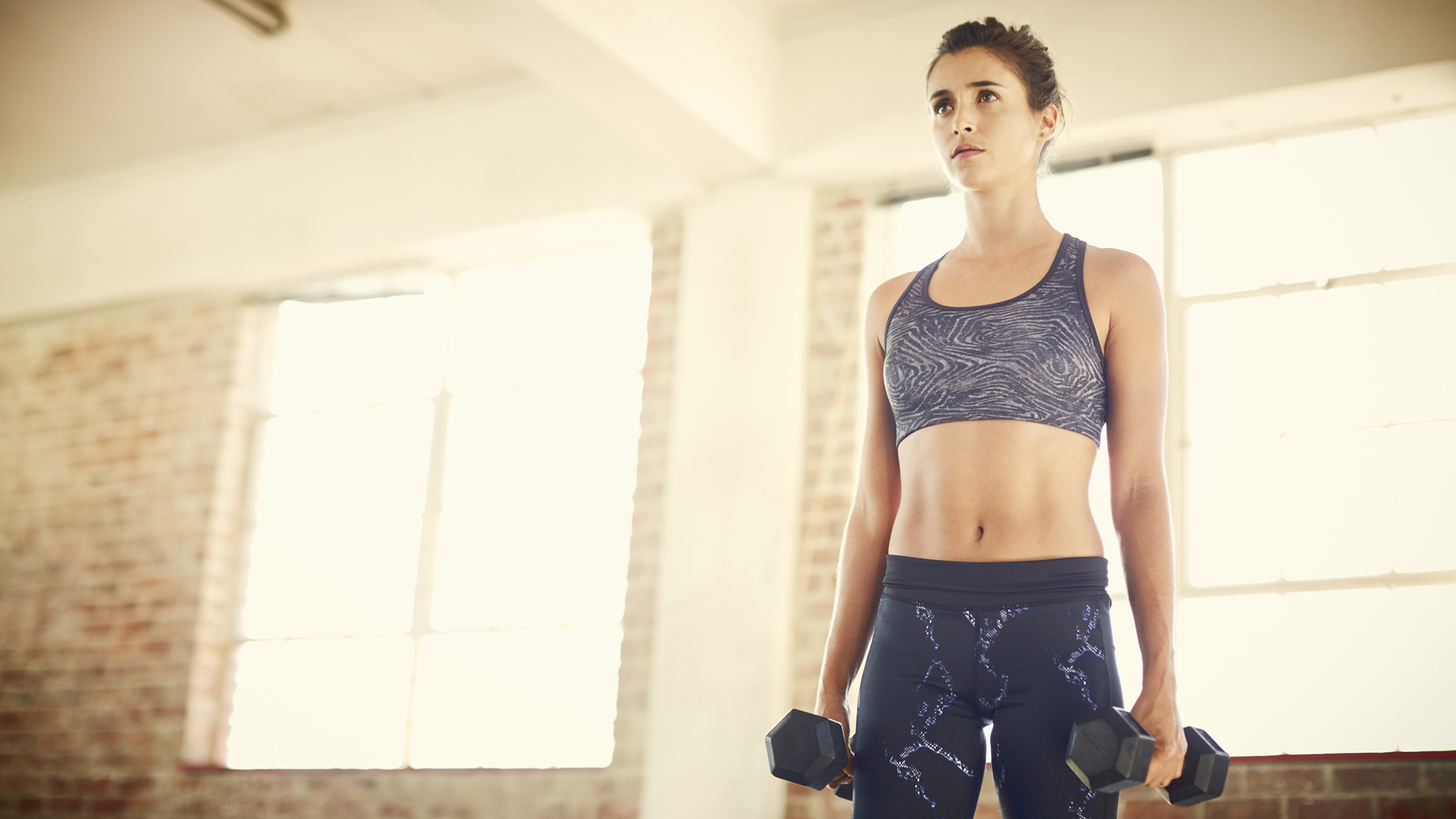
Most abs workouts are done on the back, but the problem there is that – if you’ve left working your core until the end of your gym sesh – laying on the floor can be a pretty dangerous thing. Will you ever get back up again? It’s all too easy to feel instantly relaxed once that butt hits the ground, so motivating yourself to work on your core requires some serious discipline.
The alternative? Keep on your feet. There are plenty of core workouts that can be done standing up. In fact, it’s recommended by many PTs that working abs while standing is better as it helps you engage more muscles at once, improve your postural support, and burn more calories than most traditional floor exercises. Plus, you don't need as much space to move, which is especially helpful if you’re working out at home or in a crowded gym.
With that, we’ve spoken to top UK PT and trainer at Blok, Chloe Trigg, who has given us a rundown of the best standing core exercises that you can perform with weights, including how many and for how long you should rest between. Dumbbells at the ready…
How to do this standing abs workout with weights
According to Trigg, each of the following five exercises should be performed in 3-5 sets, each of which is made up of 10-12 reps per exercise (and per side if unilateral). You should also rest 30-60 seconds between the sets.
“Remember to keep reps controlled, engaging your core throughout each exercise,” she adds.
When it comes to the weight, you can use anything that’s heavy and easy to grip but dumbbells are preferred. Weight plates can also work, or even a kettlebell if you have one to hand.
1. Standing rotation
What it does: This exercise targets not only the abs but the shoulders, back and oblique muscles.
Sign up to the T3 newsletter for smarter living straight to your inbox
Get all the latest news, reviews, deals and buying guides on gorgeous tech, home and active products from the T3 experts
“During this exercise, your core and back are working to stabilise against the weight pulling forward, while your shoulders have the weight in an isometric hold and obliques are challenged by the rotational movement,” explains Trigg.
How to do it:
- Hold a weight (dumbbell, plate or kettlebell) in front of you at shoulder height with your arms straight.
- Rotate slowly through your core, moving your head and shoulders so that your gaze doesn’t shift from the weight.
- Allow your rear foot to pivot onto the toe as you rotate, turn back to the centre and then repeat on the other side.
2. Standing side bend
What it does: This exercise strengthens the oblique muscles, the two abdominal muscles that provide trunk flexion and rotation. The external oblique is the thickest and runs from the lower ribs to the iliac crest and supports rotational movements. These work to minimise side-to-side rotations during exercises such as running.
How: to do it:
- Hold a weight in your left hand and keep it by your side. Ensure your feet are hip-width apart while standing tall. Keep your eyes forward and your abs contracted.
- With your right hand either behind your head or resting on your abs, lean to the left as you slide the weight down your side towards your knee.
- Use right oblique to pull the body back to the upright position, and repeat.
3. Standing single leg crunch
What it does: This exercise works the core as well as the glutes, shoulders, back and obliques. As it is performed, your core works to stabilise and balance itself while also contracting to pull your torso into a compression (crunch). At the same time, the shoulders and back work to control the weight as the glutes fire up to help keep you grounded.
How to do it:
- Hold a weight in both hands above your head. With feet hip-width apart, pull ribs in and tuck in your pelvis to engage the core.
- Net, pull the weight down towards the left hip and at the same time drive the left knee up to meet the weight at the hip.
- Keep your arms long and compress your knee up towards your navel, so you can crunch the weight over your knee. Return to starting position and repeat.
4. Standing halo
What it does: The Standing Halo is designed to challenge your core through the rotational movement by shifting where the weight is distributed around your body. It forces your core to stabilise as the weight rotates, which helps to strengthen it over time.
How to do it:
- Stand tall and with your ribs pulled in, your pelvis tucked, glutes squeezed and core engaged.
- Hold a weight in both hands by the front of the neck, keep your elbows tucked and shoulders back.
- Now, rotate the weight around your head clockwise, keeping your head and body still with the weight. Ensure the elbows stay tight and as close to your head as possible. Repeat.
5. Standing cross-body chop
What it does: This exercise works the abs, upper back, shoulders and glutes. It also aids hip and lumbar (lower back) stability by emphasising torso rotation.
How to do it:
- Start with weight held in both hands in front of your left hip. Keep your feet shoulder distance apart with the core and glutes engaged, shoulders back and chest proud.
- With your arms out long, raise the weight above your right shoulder in a diagonal direction across the front of your body.
- Resist using your lower body to drive the weight up. Isolate through the core and then control the weight back down to your hip. Repeat.
This standing abs workout could be performed every day but for best results, take a rest day inbetween (3-4 days a week) and if integrated into a strength programme, it’s always best to work the core after your resistance training as it can fatigue you and eat into your lifting performance.
Lee Bell is a freelance journalist & copywriter specialising in technology, health, grooming and how the latest innovations are shaking up the lifestyle space. From national newspapers to specialist-interest magazines and digital titles, Lee has written for some of the world’s most respected publications during his 11 years as a journalist.
